Pesticide Surveillance in Fruits and Vegetables from Romanian Supply: A Data-Driven Approach
- PMID: 40700151
- PMCID: PMC12285958
- DOI: 10.3390/jox15040104
Pesticide Surveillance in Fruits and Vegetables from Romanian Supply: A Data-Driven Approach
Abstract
The evolution of global agriculture encourages the extensive use of pesticides although significant concerns regarding their impact on human health and the environment must be considered. The present paper highlights the presence and concentrations of various pesticide residues in fruits and vegetables available on Romanian markets. A total of 74 pesticide compounds authorized for agricultural use were identified and quantified in 620 randomly selected samples spanning a wide range of horticultural products by employing the QuEChERS extraction method and liquid chromatography-mass spectrometry (LC-MS/MS). The most often detected pesticides comprised boscalid and azoxystrobin, present in 42% and 37% of apple and strawberry samples, respectively, with mean concentrations of 0.12 mg/kg and 0.09 mg/kg. In cucumbers and tomatoes, difenoconazole and acetamiprid were predominant, detected in 35% and 40% of samples, with average residue amounts of 0.08 mg/kg and 0.07 mg/kg, respectively. Statistical analysis, achieved with Python 3.13.2, the pandas library (alongside descriptive statistics), and ANOVA, revealed significant variations in residue levels based on the product type and geographic origin. Boscalid and azoxystrobin were commonly encountered in apples and strawberries while difenoconazole and acetamiprid predominated in cucumbers and tomatoes. Even though the majority of pesticide residues conformed to EU maximum residue limits (MRLs), about 6% of samples, generally from imported products, displayed some residue concentrations approaching critical thresholds, with the highest exceedance observed for chlorpyrifos and lambda-cyhalothrin at concentrations of up to 0.25 mg/kg. This research provides a comprehensive overview of pesticide residues prevalence in Romania's fresh product supply while, at the same time, supporting consumer awareness initiatives and evidencing the critical demand for continuous monitoring and strengthened regulatory frameworks for food safety.
Keywords: chromatography; fruits; pesticides; statistical analysis; vegetables.
Conflict of interest statement
The authors declare no conflicts of interest.
Figures
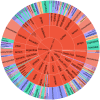
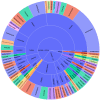
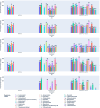

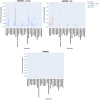
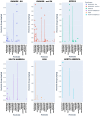

Similar articles
-
Influence of On-farm Pesticide Practices and Processing Methods on Pesticide Residue Levels in Potato Tubers (Solanum tuberosum L.) in Nyandarua County, Kenya.J Food Prot. 2025 Jun 23;88(7):100521. doi: 10.1016/j.jfp.2025.100521. Epub 2025 Apr 24. J Food Prot. 2025. PMID: 40287142
-
Pesticide Residues in Fruits and Vegetables from Cape Verde: A Multi-Year Monitoring and Dietary Risk Assessment Study.Foods. 2025 Jul 28;14(15):2639. doi: 10.3390/foods14152639. Foods. 2025. PMID: 40807577 Free PMC article.
-
Evaluation of Broad-Spectrum Pesticides Based on Unified Multi-Analytical Procedure in Fruits and Vegetables for Acute Health Risk Assessment.Foods. 2025 Jul 18;14(14):2528. doi: 10.3390/foods14142528. Foods. 2025. PMID: 40724349 Free PMC article.
-
NTP Developmental and Reproductive Toxicity Technical Report on the Prenatal Development Studies of 2-((1-(4-Phenoxyphenoxy)propan-2-yl)oxy)pyridine (CASRN 95737-68-1) in Sprague Dawley (Hsd:Sprague Dawley® SD®) Rats and New Zealand White (Hra:NZW SPF) Rabbits: DART Report 07 [Internet].Research Triangle Park (NC): National Toxicology Program; 2022 Jan. Research Triangle Park (NC): National Toxicology Program; 2022 Jan. PMID: 35593777 Free Books & Documents. Review.
-
Corticosteroids for the treatment of Duchenne muscular dystrophy.Cochrane Database Syst Rev. 2016 May 5;2016(5):CD003725. doi: 10.1002/14651858.CD003725.pub4. Cochrane Database Syst Rev. 2016. PMID: 27149418 Free PMC article.
References
-
- Chandrasekaran M., Paramasivan M. Plant Growth-Promoting Bacterial (PGPB) Mediated Degradation of Hazardous Pesticides: A Review. Int. Biodeterior. Biodegrad. 2024;190:105769. doi: 10.1016/j.ibiod.2024.105769. - DOI
-
- Sarker A., Nandi R., Kim J.-E., Islam T. Remediation of Chemical Pesticides from Contaminated Sites through Potential Microorganisms and Their Functional Enzymes: Prospects and Challenges. Environ. Technol. Innov. 2021;23:101777. doi: 10.1016/j.eti.2021.101777. - DOI
-
- Das D., Chakraborty S., Bhattacharjee C., Chowdhury R. Biosorption of Lead Ions (Pb2+) from Simulated Wastewater Using Residual Biomass of Microalgae. Desalination Water Treat. 2016;57:4576–4586. doi: 10.1080/19443994.2014.994105. - DOI
Grants and funding
- Sectorial Plan-ADER 2026, Project ADER 6.3.7/Ministry of Agriculture and Rural Development-Romania
- NUCLEU Program-Financing Contract no. 20N/05.01.2023/Ministry of Education and Scientific Research (Romania)
- Contract no.: 760005/2022, Code 2/European Union through the Ministry of Education and Scientific Research (Romania)
LinkOut - more resources
Full Text Sources

